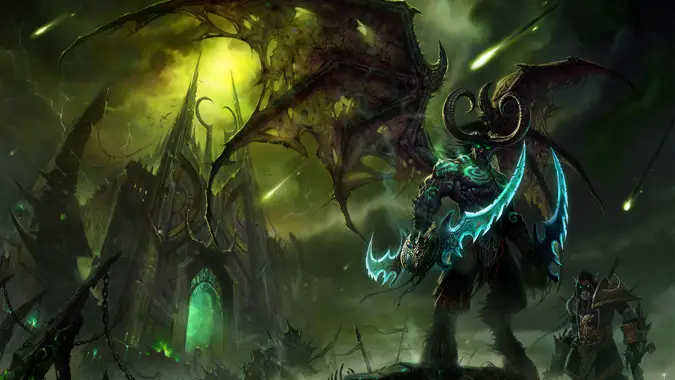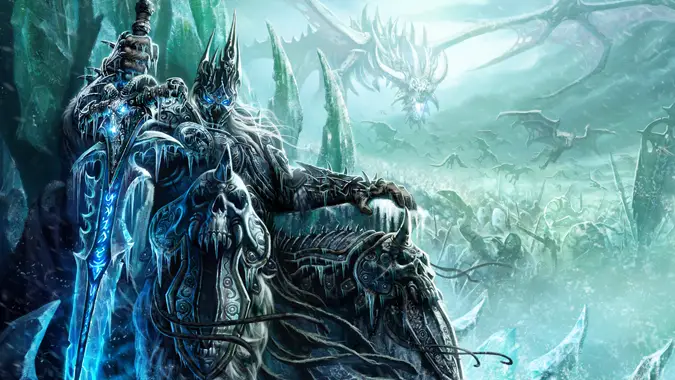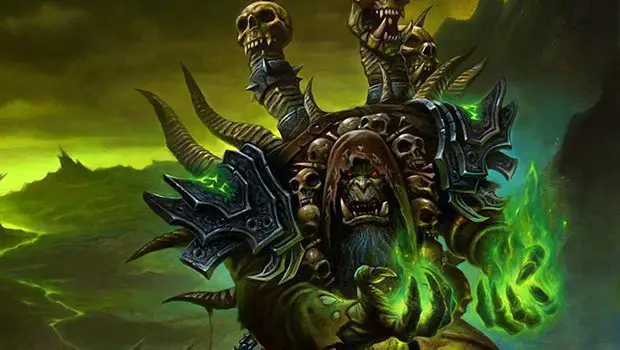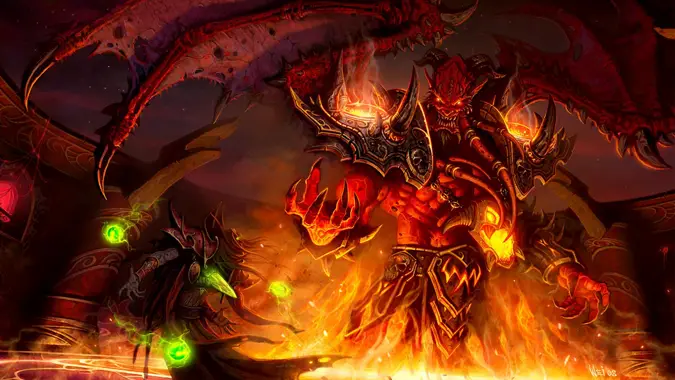Role Play: Creating a villain

Typically, when roleplayers choose to create a new character, they veer towards the hero, or at the very least someone who likes to do what’s right. This is kind of expected in a game like World of Warcraft, where we’re constantly pitted against the worst the world has to offer, and expected to come out on top. Everywhere you go, you’re referred to as a heroic figure by NPCs like your garrison followers and residents, even the NPCs in Ashran know that you’re a pretty big deal.
But there’s something to be said about playing the darker side of the equation, like the sinister scoundrel bent on global domination, or the enigmatic cult leader that just wants to see the world burn. Playing a villain takes a very different kind of roleplayer — a roleplayer who isn’t so much invested in winning every situation, but far more entertained by creating conflicts for other people to overcome.
 Villain archetypes
Villain archetypes
It takes all types to be a villain, and World of Warcraft runs the gamut of them all. Pretty much any encounter you fight, you’re facing some kind of villain — that’s why you’re fighting them, after all. When you’re coming up with a villainous character you can take cues from what exists in WoW already, and pick the type of role that sounds best to you. Playing a villain means that you’re going to be in constant contact with people, not to help them out, but to provide those moments of conflict that drive a plot along and keep it interesting.
Obviously the basics for creating a character are going to be exactly the same — you want to create someone who fits within the game world, someone who has a reason for being where they are, and doing what they do. Instead of looking for motivation to fight like a hero, however, you’re looking for that reason you decided to turn to a life of crime, or evil. Give your character some goals to go after, but remember that those goals don’t have to be noble, pleasant, or even understandable to work. There are a few different villain archetypes that are pretty common in WoW.
- Deathwing Deathwing wasn’t a villain to begin with — he was actually one of the Aspects, one of Azeroth’s protectors. But what made Deathwing a villain was the fact that he was corrupted by the Old Gods, and they drove him completely mad. Despite being crazy, Deathwing was actually pretty cunning and excellent at manipulation; he had the court of Lordaeron entirely fooled when he disguised himself as Lord Prestor after the Second War. A villain that has been driven to madness doesn’t really need a method to their madness, nor do they need a typical goal — sometimes what they want out of the world is, for them, extremely personal… and sometimes they just want to watch the world burn, and laugh about it. A lot.
- Vanessa VanCleef Vanessa wasn’t driven to madness — Vanessa just wanted revenge. She was cold, calculating, and spent most of her life plotting the best way to get it. Schemers like these usually have one goal in mind, be it revenge, a rise to power, or even the end of the world. But they aren’t crazy in the least, they’re usually incredibly smart about how they go about getting things done, and usually working right under everyone’s noses, hidden in plain sight.

- The Scarlet Crusade What made the Scarlet Crusade interesting was that they were absolutely, without a doubt, one hundred percent convinced that they were doing the right thing. And from the right angle, they absolutely were — the eradication of the Scourge seems like it would be a noble goal at first. But their fanatical devotion to their admittedly righteous cause led them down a road that ultimately ended very, very poorly for them. Of course it didn’t help that they were in turn being manipulated by a higher power via the Burning Legion, but what really drove the point home for these villains wasn’t their manipulation. It was that they were convinced above everything else that what they were doing was the right thing to do.
- Gul’dan And then you have Gul’dan. There is nothing redeemable about Gul’dan, there is no good side to his character, there is no moment of absolution or redemption waiting in the wings. Gul’dan knows that what he’s doing is horrible, evil, despicable, and just plain wrong — and he doesn’t really care. He’s doing evil for the sake of doing evil, stepping on the souls of his own people for more power, and laughing at our attempts to take him down. Gul’dan is probably the most stereotypical view of a villain character, someone who is evil to the core, and would happily set the world on fire if it meant he came out ahead.
There are other types of villains out there to be had, but this gives you an idea of the kind of nuance you can apply to a villainous character. What makes them tick? What drove them down the wrong path? Did something horrible happen that sent them down that road, did they completely lose their mind? Are they convinced that what they’re doing is the right thing to do, or are they well aware they’re evil, and relishing the torment they inflict on others? These are the kinds of things you want to establish when you’re creating a villain — you’re not just giving them motives for existence, you’re giving them motivation for the type of existence they lead.
 Interacting with a villain
Interacting with a villain
Playing a villain isn’t something I recommend to novice roleplayers, because it takes a lot of effort to successfully pull one off. It’s not just about cackling maniacally at random people and expecting them to play along — being a villain is one of those things you want to advertise and let people know. And generally speaking, you’re going to be interacting with a lot more people when you’re playing a villain, because it’s hard to find anyone who willingly plays an evil character. Heroes are a dime a dozen, but a good villain is exceptionally rare to find.
Why? Because it’s not easy to do at all. You have to go into roleplay with the mindset that you’re not playing to “win” — you’re playing to stall at best, but in the end you’ll likely be foiled. The joy in playing a villain doesn’t come from defeating foes and resolving conflicts, it comes from creating conflicts for other roleplayers to resolve. In a way, it’s a lot like being the GM (Game Master) of a roleplaying event — you’re the one that dictates what will and won’t work when it comes to defeating your character.
But at the same time, you’re still fully in control. You’re the one that makes the call on whether or not your character can be killed, when they can be defeated, what it takes to take them down. Keep in mind, however, that you do want to make them someone that can be defeated. If heroes can’t band together and take you down, then there’s little reason to keep roleplaying with you — they’re looking for the satisfaction of victory, after all. You’re just trying to make sure it takes them a suitably long time to get there.
 It can also be a little hard to play a villain from an emotional standpoint, too. When you’re playing a villain, you have to be clear that what you say in character is not what you feel out of character — and you have to understand that the same applies to the people you’re roleplaying with, too. You have to be able to identify how far you can push people in a roleplaying environment, and make sure that you don’t cross any lines with your fellow roleplayers. You want to keep a line of constant, out of character communication with those you choose to roleplay with, to make sure nothing gets too far out of hand. And if things do get out of hand, you have to be considerate of the feelings of others, and willing to take a step back and tone things down.
It can also be a little hard to play a villain from an emotional standpoint, too. When you’re playing a villain, you have to be clear that what you say in character is not what you feel out of character — and you have to understand that the same applies to the people you’re roleplaying with, too. You have to be able to identify how far you can push people in a roleplaying environment, and make sure that you don’t cross any lines with your fellow roleplayers. You want to keep a line of constant, out of character communication with those you choose to roleplay with, to make sure nothing gets too far out of hand. And if things do get out of hand, you have to be considerate of the feelings of others, and willing to take a step back and tone things down.
While I don’t recommend playing a villain for everyone, there’s something to be said about playing with evil, and being the one who is pulling the strings. It’s a difficult role to play, but it can also be really rewarding, expose you to a lot of potential roleplay opportunities, and make you a lot of friends along the way.
Please consider supporting our Patreon!
Join the Discussion
Blizzard Watch is a safe space for all readers. By leaving comments on this site you agree to follow our commenting and community guidelines.
 @Shadesogrey
@Shadesogrey



